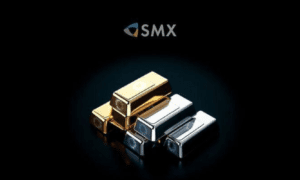Investing in gold is a time-tested strategy for building wealth and preserving value. Whether you’re a seasoned investor or a newcomer, understanding how to invest in gold can provide a solid foundation for diversifying your portfolio. This guide will walk you through various methods of gold investment, each with its own advantages and considerations.
Understanding the Appeal of Gold
Gold has been a symbol of wealth and a hedge against economic instability for centuries. Its value is driven by several factors, including its role as a safe-haven asset, its physical properties, and market demand. Before diving into specific investment strategies, it’s crucial to grasp why gold is such a compelling investment option.
Gold is often considered a safe haven during economic downturns and inflationary periods. Its physical properties make it a tangible asset, which can be comforting to investors seeking stability. Additionally, gold has a relatively low correlation with other asset classes, making it a valuable tool for portfolio diversification.
Different Ways to Invest in Gold
When exploring how to invest in gold, you’ll encounter various methods, each catering to different investment goals and risk tolerances. Here’s an overview of the primary ways to invest in gold:
1. Physical Gold
Investing in physical gold involves purchasing gold bars, coins, or jewelry. This method provides direct ownership and can be a tangible asset in your investment portfolio. However, it requires secure storage and insurance, and it may come with additional costs such as premiums over the spot price of gold.
- Gold Bars and Coins: These are among the most straightforward ways to invest in gold. Gold bars come in various sizes and are typically traded based on their weight and purity. Coins, such as the American Gold Eagle or Canadian Gold Maple Leaf, are also popular and often come with a collectible value.
- Jewelry: While investing in gold jewelry can be aesthetically pleasing, it’s generally not recommended as a primary investment strategy due to high markups and potential for fashion-related depreciation.
2. Gold ETFs and Mutual Funds
Gold exchange-traded funds (ETFs) and mutual funds offer a more liquid and convenient way to invest in gold. These funds track the price of gold and can be traded like stocks on major exchanges.
- Gold ETFs: These funds are designed to track the price of gold and are backed by physical gold. They offer the benefit of liquidity and easy access to the gold market without the need for physical storage. Popular examples include the SPDR Gold Shares (GLD) and iShares Gold Trust (IAU).
- Gold Mutual Funds: These funds invest in a mix of gold-related assets, including physical gold and mining stocks. They offer diversified exposure to the gold market and are managed by professional fund managers.
3. Gold Mining Stocks
Investing in gold mining companies can provide indirect exposure to gold prices. The value of mining stocks is influenced not only by gold prices but also by the operational performance of the mining company.
- Individual Mining Stocks: Investing in individual gold mining companies can be more volatile but offers the potential for significant returns if the company performs well. Researching companies with strong fundamentals and a history of successful gold production is crucial.
- Gold Mining ETFs: These funds invest in a portfolio of gold mining stocks, providing diversified exposure to the gold mining sector. They can be less volatile than individual mining stocks and offer a balanced approach to investing in gold mining.
How to Invest in Gold: Key Considerations
When deciding how to invest in gold, consider the following factors to align your investment with your financial goals:
1. Investment Goals and Horizon
Your investment goals and time horizon will influence the best method for investing in gold. If you seek long-term preservation of wealth, physical gold or gold ETFs might be suitable. For those looking for short-term gains or diversification, gold mining stocks or mutual funds could be more appropriate.
2. Risk Tolerance
Gold investments come with varying levels of risk. Physical gold offers stability but lacks liquidity. ETFs and mutual funds provide easier access but may be subject to market fluctuations. Mining stocks can be more volatile but offer the potential for higher returns.
3. Costs and Fees
Each method of investing in gold comes with its own costs and fees. Physical gold requires storage and insurance costs, while ETFs and mutual funds have management fees. Gold mining stocks may have brokerage fees and potential taxes on gains. Understanding these costs can help you choose the most cost-effective investment strategy.
4. Liquidity
Consider how easily you can convert your gold investment into cash. Physical gold requires a buyer, whereas gold ETFs and mutual funds can be sold on the open market. Mining stocks and funds also offer liquidity but may be subject to market conditions.
How to Invest in Gold: Steps to Get Started
- Research and Educate Yourself: Understand the different methods of investing in gold and determine which aligns best with your goals and risk tolerance.
- Choose Your Investment Method: Decide whether you want to invest in physical gold, gold ETFs, mutual funds, or mining stocks based on your research and objectives.
- Open an Account: For ETFs and mutual funds, open a brokerage account or retirement account if you don’t already have one. For physical gold, find a reputable dealer.
- Make Your Purchase: Execute your investment by buying physical gold, purchasing shares in a gold ETF or mutual fund, or investing in mining stocks.
- Monitor and Adjust: Regularly review your gold investments and make adjustments as needed based on market conditions and your financial goals.
Conclusion
Investing in gold can be a rewarding way to diversify your portfolio and hedge against economic uncertainties. By understanding the various methods of how to invest in gold and considering your investment goals, risk tolerance, and costs, you can make informed decisions that align with your financial objectives. Whether you choose physical gold, ETFs, mutual funds, or mining stocks, gold remains a timeless investment that can enhance your financial stability and growth.
Read More From Techbullion And Businesnewswire.com



































